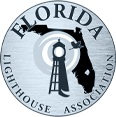Today it’s all Global Positioning System, and just about anybody with a cellphone, wi-fi and a sweet spot navigation device can get almost anywhere easily with reliable transportation and some instruction by your teenager-grandchild on those new-fangled gadgets, designed to assist your taking the helm or wheel to get where you want to go.
Speaking of the helm, Explorer Juan Ponce DeLeon is credited with “discovering” Florida which he thought initially was a large island. As he went along the coast, he and his navigator made notes, maps and drawings or descriptions of what he saw to benefit his crew, the future, and himself. He did want to get back somehow. He even named some areas, as was his prerogative.
For some thousand years before and some hundreds of years after, not much changed. People travelled using visual aids like geographic oddities, maps, written or orally recounted directions, and road and street signs, magical magnetic objects like compasses, and at night positions of stars.
Travelling by boat or ship along the coast was much trickier. Usually, along a road, one could in the daytime see signs, and hazards, not just on the surface immediately in front of you, but for a distance.
Going down and out to the sea at night or along a river or lake required even more help, and that had to be usually visual, too.
That’s where lighthouses came in, and still do.
To celebrate shipping safety, the National Historic Landmark Ponce Inlet Lighthouse and Museum invites all on Saturday, April 20, from 10:00 am to 2:30 pm to enjoy a day of historical celebration of those unique sentinels of the sea, Florida’s lighthouse stations. Come see what a complete, active, now private (not Coast Guard) aid to navigation looks like, and explore the effort it took to build and maintain it, especially the use of the first modern optic, the Fresnel Lens. All of that and more.
The Ponce Inlet Lighthouse staff and its docents will offer informational and inspiring presentations, fun hands-on workshops, and a children’s take-home craft to observe, highlight and commemorate the day, and all included.
“Florida’s historic lighthouse styles are as varied and as interesting as its people, history and its geography. From Brick Giants like our Ponce Inlet, to the skeletal screw-piles of the Keys, Florida has just about every type of lighthouse ever built,” said Mike Bennett, Ponce Inlet Lighthouse Director of Operations and an officer of the Florida Lighthouse Association. “The state-of-the-art engineering, technology, and the human story of the heroism and steadfastness of the lighthouse keepers and their families, adds so much to our chronicle,” he concluded.
All day long, keeper-docents in United States Lighthouse Service uniforms will answer questions and conduct orientation tours at the lighthouse station. Climbing Florida’s tallest lighthouse tower with its breath-taking view from the out-door open gallery, some seventeen stories up, is always a special treat. In addition, the station’s many historic buildings, now museums, house interesting exhibits and artifacts devoted to the record of the American lighthouse service and the Ponce Inlet Lighthouse story. The lighthouse’s nationally acclaimed Lens Museum features an almost unparalleled collection of rare Fresnel Lenses, is one of the largest collections among maritime museums in the world.
Admission to the special programs is included in the regular Ponce Inlet Lighthouse fees. For more information, please contact the Ponce Inlet Lighthouse at 386-761-1821, Extension 18.



